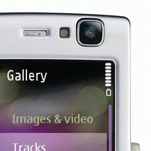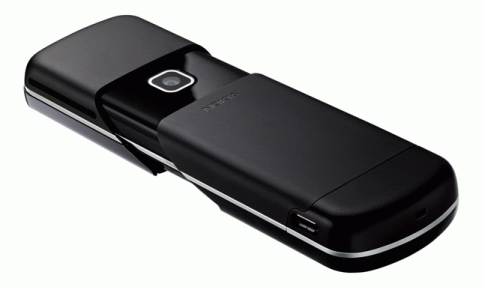Waste Of Space or Still Quite Useful?
The most remarked-upon thing about mobile phones in recent years is the explosion in the number of features they contain. Even the cheapest models may have dozens of different uses, and indeed one of the biggest complaints from some people is that it's impossible to buy a phone that is just a phone any more.
But practically all of us use our phones for a little bit more than calls, we all glance at the display to see the time for example, and texting is almost universally used. So it's not a question of wanting to get rid of every non-call feature, it's simply getting rid of the features we don't use. The trouble is, different people use different features, so it's often simpler and cheaper to just include lots of features as standard.
However, if you were asked by a manufacturer, which features would you tell them to get rid of? Here are five that are arguably surplus to requirements, though there are arguments in favour of keeping them too.

1) Infrared Ports
A long time ago, before the days of HSPA, GPRS, Bluetooth and Wi-Fi, the only way to transmit data wirelessly between devices was an infrared port. You lined the two devices up with their IR transceivers facing each other, and they would transmit whatever data was required.
IR offers very little advantage today, as Bluetooth does practically everything IR can do plus much much more, and can even do it without a direct line-of-sight. IR port hardware also takes up valuable space within the handset which could be devoted to other things. Yet there are IR ports on some very new Symbian devices such as the Nokia E71. Is anyone actually still using this feature?
On the other hand... Infrared also left a heck of a lot of legacy devices out there, especially in the business community. If IR ports cost very little to add to a phone, and a manufacturer wants to guarantee as much connectivity as possible on their business models, why not include them? Floppy disk drives survived in PCs long after the development of flash and optical memory for exactly this reason.
2) Visual Radio
 Way back in 2004 Nokia launched a venture in association with HP called Visual Radio, which as its name suggests allows graphical content to be downloaded to phones in sync with transmissions on selected FM stations. You select the station in the phone's FM tuner application, and images relevant to the station's current output (including information such as "song now playing" and interactive content such as competitions) appear on the screen.
Way back in 2004 Nokia launched a venture in association with HP called Visual Radio, which as its name suggests allows graphical content to be downloaded to phones in sync with transmissions on selected FM stations. You select the station in the phone's FM tuner application, and images relevant to the station's current output (including information such as "song now playing" and interactive content such as competitions) appear on the screen.
In real life the number of countries and number of FM stations within each country which support Visual Radio is fairly small. What's more, you often have to have the right network operator in order to access VR content, so the odds are stacked against being able to use the service at all. This writer had even worse luck: with the exception of the 5320 XpressMusic they could not get Visual Radio to work on any other phone, despite having the right station, right location and right phone network.
Even when it does work, the advantages of the service are no longer clear in an age where more and more phones have high quality web browsers capable of displaying ever more complex radio station websites. Even those stations that do support Visual Radio often just have a placeholder graphic showing the station's logo, presumably because they don't feel it's worth the effort of adding content to VR right now.
At the time of writing the official Visual Radio website was down, with a link to Nokia's own site as the only content. Have they pulled the plug on the service?
On the other hand... Visual Radio obviously costs very little to add to a phone, it's essentially just a simple pre-written application that accesses the FM tuner hardware and displays simple content downloaded from the internet. There probably wouldn't be any cost savings by getting rid of it, and maybe it could achieve some kind of useful critical mass over time if it's included in enough models? The market on cheap phones without advanced browsers might be significant, especially in the developing world where radio is more widely listened to anyway.
3) Videophone cameras
 How many people actually use their phone's video call function? Videophone ability is available on a very wide range of phones now, even on cheaper mid-range models, but it's still relatively rare to see people using it in public. In many ways videophones have been doomed since their first tentative beginnings on many many episodes of Tomorrow's World, as video calls lack the privacy and convenience of voice calls or texts, and it's quite hard to make a video call while walking down the street or wandering round a shop.
How many people actually use their phone's video call function? Videophone ability is available on a very wide range of phones now, even on cheaper mid-range models, but it's still relatively rare to see people using it in public. In many ways videophones have been doomed since their first tentative beginnings on many many episodes of Tomorrow's World, as video calls lack the privacy and convenience of voice calls or texts, and it's quite hard to make a video call while walking down the street or wandering round a shop.
On the other hand... Videophone do indeed require a bit more privacy than normal voice calls, but perhaps people use it more at home, in a similar way to PC webcams. And, more importantly, videophones have a huge potential for deaf users who may use them to communicate through sign language (this writer saw someone doing just that in a railway station recently). On top of all that, videophone cameras serve a useful second function as a self-portrait camera/camcorder, albeit with a lower resolution than the main camera.
4) 2.5mm headphone sockets
Ahhh, the oldest of old chestnuts in the mobile music world: they look like ordinary headphone sockets, they work like ordinary headphone sockets, but by golly you can't use normal headphones with them because they're 1mm too narrow. 2.5mm sockets were originally intended for use with mono headsets in the pre-music phone age, but now that practically every model is MP3 compatible and has an FM radio the case for 3.5mm is much stronger. 3.5mm gives you the option of using practically any audio attachment you want, including top-of-the-range headphones and even full-size external speakers, while 2.5mm audio accessories tend to be much rarer and lower quality.
On the other hand... 2.5mm sockets are physically smaller than 3.5mm ones, so they allow the phones to be physically smaller too (though that seems to be rather undermined by svelte feature-packed models such as the Nokia 5310 including 3.5mm sockets).

The 8600 Luna was the first Nokia phone to dump the charging socket back in 2007, and receives power entirely through its microUSB port. The Symbian-based N85 has followed in its footsteps, but so far USB charging remains rare on Nokia devices.
5) Dedicated charging sockets
It's been possible for some years now to recharge a mobile device through its USB port. This allows it to draw current from practically any computer or laptop, which means you only have to carry one cable with you for both power and data transfer. Even if you prefer charging devices the traditional way with mains electricity, that's also possible through a charger with a suitable USB plug on it. There really is no need for a separate charging socket on most portable devices any more, as the USB socket is there anyway. Why have two sockets when one will do?
On the other hand... Being specific to one company, there are a heck of a lot of Nokia chargers out there, and you can't use USB charging if you don't have access to a computer or USB-socket charger (though that is undermined somewhat by Nokia's replacement of the old thick charging socket with a thinner one a couple of years ago, if they changed once they could change again).
